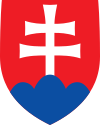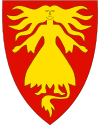Portal:Heraldry
Welcome to the Heraldry and Vexillology Portal!


Vexillology (from the Latin vexillum, a flag or banner) is the scholarly study of flags, including the creation and development of a body of knowledge about flags of all types, their forms and functions, and of scientific theories and principles based on that knowledge. Flags were originally used to assist military coordination on the battlefield, and have evolved into a general tool for signalling and identification, particularly identification of countries.
Heraldry encompasses all of the duties of a herald, including the science and art of designing, displaying, describing and recording coats of arms and badges, as well as the formal ceremonies and laws that regulate the use and inheritance of arms. The origins of heraldry lie in the medieval need to distinguish participants in battles or jousts, whose faces were hidden by steel helmets.
Selected biography

James Robinson Planché (February 27, 1796 – May 30, 1880) was a British dramatist, antiquary and officer of arms. Over a period of almost 60 years he wrote, adapted, or collaborated on 176 plays in a wide range of genres. Planché was responsible for introducing historically accurate costume into nineteenth century British theatre, and subsequently became an acknowledged expert on historical costume, publishing a number of works on the topic.
Planché's interest in historical costume led to other antiquarian research, including heraldry and genealogy. He was elected a Fellow of the Society of Antiquaries in 1829, and was influential in the foundation of the British Archaeological Association in 1843. Appointed Rouge Croix Pursuivant in 1854 and promoted to Somerset Herald in 1866, Planché undertook heraldic and ceremonial duties as a member of the College of Arms including proclaiming peace at the end of the Crimean War and investing foreign monarchs with the Order of the Garter. (more...)
Selected flag

The flag of the Republic of Kosovo was adopted by the Assembly of Kosovo immediately following the declaration of independence of the Republic of Kosovo from Serbia on 17 February 2008. The flag is the result of an international design competition, organized by the United Nations-backed Kosovo Unity Team, which attracted 993 entries. Under the terms of the contest, all entries had to reflect the multi-ethnic nature of Kosovo, avoiding the use of the double-headed eagle or the use of solely red and black or red, blue and white color schemes. The now-used design is a variant of one proposal designed by Muhamer Ibrahimi. It shows six white stars in an arc above a golden map of Kosovo on a blue field. The stars symbolize Kosovo's six major ethnic groups. (more...)
Selected coat of arms

The coat of arms of Slovakia is composed of a silver (argent) double cross, elevated on the middle peak of a dark blue mountain consisting of three peaks. It is situated on a red (gules) early gothic shield. Extremities of the cross are amplificated, and its ends are concaved. The same symbol (with other colours and minor changes) is in the sinister portion of the Hungarian coat of arms. (more...)
Selected picture

The Hyghalmen Roll was made in the late fifteenth century and illustrates the German practice of repeating themes from the arms in the crest.
Did you know...
- ...that the Coat of arms of Lardal (pictured) in Norway features a hulder as a charge?
- ...that for most of Sir Richard Lane's time as Lord Keeper of the Great Seal, there was no Great Seal?
- ...that the Seal of the Federal Bureau of Investigation was first used on January 1, 1941?
- ...that during the Croatian War of Independence the Croatian ship registry was not recognized, so Atlantska Plovidba registered its ships under the Flag of Malta?
- ...that Kasim Reed, a 2009 Atlanta mayoral candidate, is known for keeping the battle emblem of the Confederate States of America from being considered for inclusion on the Georgia State Flag?
Related portals
|
|
|
Heraldry Web resources
Authorities
- Belgium - The Council of Nobility, Flemish Heraldic Council and Council of Heraldry and Vexillology of the French Community
- Canada - Canadian Heraldic Authority and see also Public Register of Arms, Flags and Badges
- England, Wales, and Northern Ireland - The College of Arms
- Ireland - The Office of the Chief Herald of Ireland
- Netherlands - High Council of Nobility
- Portugal - Instituto da Nobreza Portuguesa
- Scotland - The Court of the Lord Lyon
- South Africa - South African Bureau of Heraldry
- Sweden - National Board of Heraldry, The National Archive
- United States Army - The United States Army Institute of Heraldry
Societies
- Greek Heraldry Society
- The Academy of Heraldic Science Czech republic
- The American College of Heraldry
- The American Heraldry Society
- The Augustan Society
- The Australian Heraldry Society Inc.
- Bulgarian Heraldry and Vexillology Society
- The Center for Research of Orthodox Monarchism
- Cambridge University Heraldic and Genealogical Society
- Chiltern Heraldry Group
- The College of Dracology
- Croatian Heraldic and Vexillologic Association
- The Finnish Heraldic Society
- Fryske Rie foar Heraldyk
- Hellenic Armigers Society
- Guild of Heraldic Artists
- Genealogical Society of Ireland
- Heraldry Research Institute (Japan)
- The Heraldry Society
- The Heraldry Society of Africa
- The Heraldry Society of New Zealand Inc.
- The Heraldry Society of Scotland
- The Heraldry Society of Southern Africa
- The Institute of Heraldic and Genealogical Studies
- The International Association of Amateur Heralds
- Italian Center of Vexillological Studies
- Lancashire Heraldry Group
- Macedonian Heraldry Society
- New England Historic Genealogical Society Committee on Heraldry
- Norwegian Heraldry Society
- Oxford University Heraldry Society
- Polish Heraldry Society
- Polish Nobility Confederation
- Real Academia Matritense de Heráldica y Genealogía - Royal Academy of Heraldry and Genealogy of Madrid
- Romanian Institute for Genealogy and Heraldry
- The Royal Heraldry Society of Canada
- The Russian College of HeraldryThe Russian College of Heraldry
- Serbian Heraldic Society
- Societas Heraldica Scandinavica
- Societas Heraldica Slovenica
- Swedish Heraldic Society
- Ukrainian Heraldry Society
- Royal Association Genealogical and Heraldic Office of Belgium
Vexillology
Software
- Coat of Arms Visual Designer web-based program
- Puncher Heraldry Program
- Blazonry Server - pyBlazon
- DrawShield - creates SVG shield or arms image from blazon
- CoaMaker - web-based tool
- Blazon95 and BLAZONS! 2000, older Windows applications
Texts
- Heraldry, historical and popular : with seven hundred illustrations (1863)
- A Complete Guide to Heraldry (1909)
Other
Wikimedia
The following Wikimedia Foundation sister projects provide more on this subject:
-
Commons
Free media repository -
Wikibooks
Free textbooks and manuals -
Wikidata
Free knowledge base -
Wikinews
Free-content news -
Wikiquote
Collection of quotations -
Wikisource
Free-content library -
Wikispecies
Directory of species -
Wikiversity
Free learning tools -
Wikivoyage
Free travel guide -
Wiktionary
Dictionary and thesaurus












